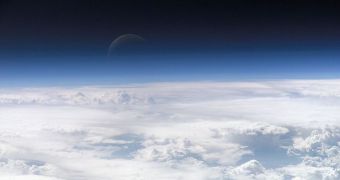For the past few decades, researchers studying the planet's atmosphere have been puzzled by the fact that the amount of water vapors in the upper layers of the atmosphere appears to be dropping. This is now considered to be one of the possible culprits for the flattening of the temperatures around the globe over the past few decades, a phenomenon that takes place regardless of the fact that humans emit increasingly large amounts of carbon dioxide and other greenhouse gases in the air, Nature News reports.
For the past ten years, between 2000 and 2009, the average temperature records leveled out, researchers announced. Though it was the warmest decade on record yet, this time frame also marked the end of 20 years of progressive, spiraling temperature rises and global warming, reports show. This decrease has been interpreted in a variety of ways. For example, some researchers have proposed that the Sun, the Earth's oceans, or variability in the climate caused this break in rise to occur, whereas global-warming critics used it to promote their agenda, saying that all climate models were false and unreliable.
According to a new investigation, thoroughly conducted by scientists at the US National Oceanic and Atmospheric Administration (NOAA), in Boulder, Colorado, it may be that the decrease of water-vapor amount in the stratosphere is to be blamed, or thanked for, for this phenomenon. They say that the stratosphere, the layer between ten and 50 kilometers above the planet, showed a ten-percent reduction in the amount of vapors it carried. This might have been one of the reasons why the expected temperature rise was offset by more than 25 percent from model-predicted rises.
The NOAA paper appears in the January 28 online issue of the top journal Science. It shows that a 30-percent increase in the amount of water vapors in the stratosphere may have been largely responsible for the huge temperature spikes that were recorded on the planet in the 1980s and the 1990s. The experts explain that, in the lower parts of the stratosphere, water vapors act in very much the same way greenhouse gases do in the lower parts of the atmosphere, trapping and radiating heat back to the Earth. According to NOAA scientist Susan Solomon, the new data does not explain the entire difference between reality and models, but could contribute to reducing it.
She is also the first author of the Science paper, as well as the co-chair of the physical-science working group. The scientists in this group helped inform the 2007 assessment on the state of global warming developed by the UN Intergovernmental Panel on Climate Change (IPCC).

 14 DAY TRIAL //
14 DAY TRIAL //